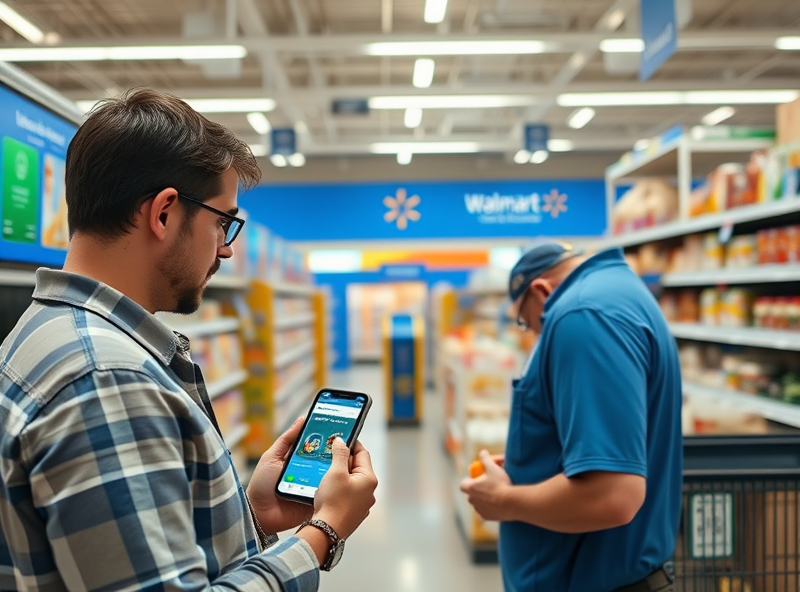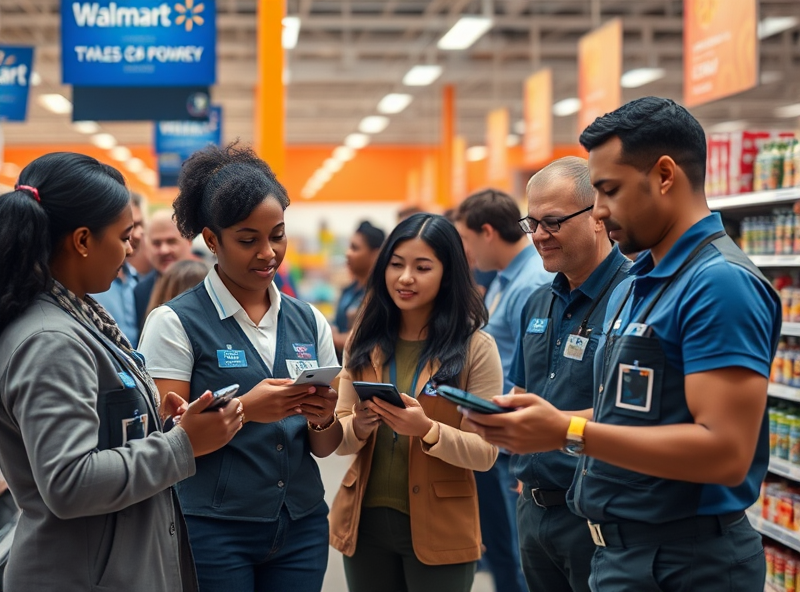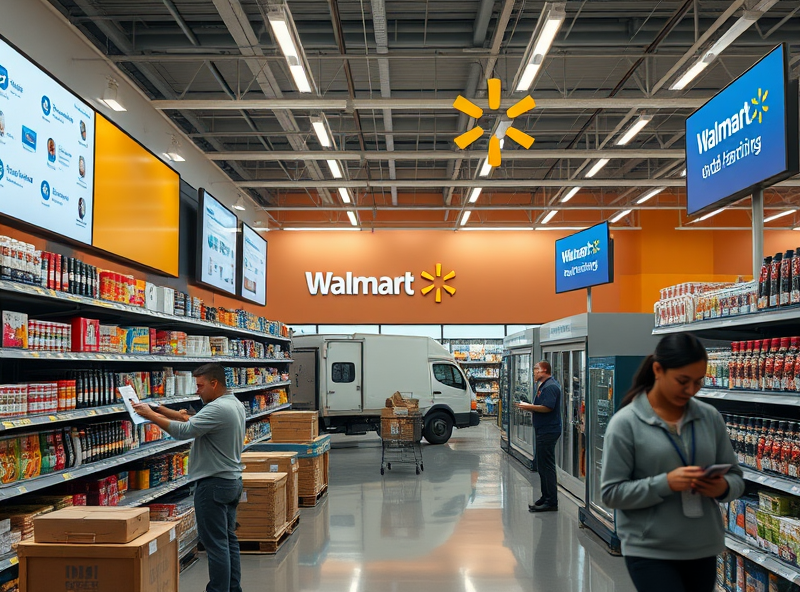
Walmart’s Digital Playbook: How Stores Power E-Commerce Growth
Omnichannel Integration with Physical Store Fulfillment

Walmart’s omnichannel strategy is redefining the future of retail by seamlessly integrating its physical stores with its digital operations. This approach allows Walmart to use its vast network of stores not just as shopping destinations, but as local fulfillment centers that power faster and more efficient e-commerce delivery.
By leveraging physical stores for online order fulfillment, Walmart significantly reduces shipping times and costs. Customers can choose from options like curbside pickup, in-store pickup, or same-day delivery—all made possible by real-time inventory tracking and intelligent logistics. This hybrid model ensures that products are closer to the customer, enabling quicker service and reducing the carbon footprint associated with long-distance shipping.
For shoppers, this means more convenience and flexibility. For Walmart, it means increased efficiency, better inventory turnover, and higher customer satisfaction. This strategy also strengthens Walmart’s competitive edge against pure-play e-commerce giants by combining the immediacy of local retail with the scale of online shopping.
Walmart’s success in this area is largely due to its investment in technology—like machine learning for demand forecasting and mobile apps that connect online and offline experiences. This digital transformation empowers store associates to fulfill online orders directly from store shelves, making every square foot of retail space more productive.
According to a report by McKinsey, retailers that successfully implement omnichannel strategies can increase customer retention rates by up to 30% (https://www.mckinsey.com/industries/retail/our-insights/the-future-of-retail-how-to-make-omnichannel-work).
Walmart+ and the Personalization of Customer Loyalty

Walmart is redefining customer loyalty in the digital age through its subscription service, Walmart+, and advanced personalization strategies. As e-commerce competition intensifies, Walmart+ is not just a convenience tool—it’s a loyalty engine designed to deepen customer relationships and drive long-term value.
Walmart+ offers members benefits like free delivery, fuel discounts, and mobile scan-and-go, but its real power lies in how it collects and uses data to personalize the shopping experience. By analyzing purchase history, browsing behavior, and location data, Walmart tailors product recommendations, promotional offers, and even in-store experiences to individual preferences. This level of personalization increases customer satisfaction and retention, making shoppers more likely to stay within the Walmart ecosystem.
Additionally, Walmart integrates its physical stores into this digital strategy. Stores serve as local fulfillment centers, enabling fast delivery and pickup options that enhance the Walmart+ experience. This omnichannel approach ensures that personalization isn’t limited to online interactions—it extends to how and where customers receive their orders.
The result is a seamless, personalized shopping journey that builds loyalty through relevance and convenience. For consumers, this means less time searching, more value from their purchases, and a more enjoyable retail experience overall.
Walmart’s strategy reflects a broader trend in retail: using data and technology to make loyalty programs smarter and more customer-centric. As personalization becomes the norm, companies that can deliver tailored experiences at scale—like Walmart—will lead the way in customer engagement.
Source: https://corporate.walmart.com/newsroom/2023/10/18/how-walmart-is-reimagining-customer-loyalty-through-walmart-plus
AI-Powered Retail and Strategic Workforce Innovations

Walmart is transforming the future of retail by combining artificial intelligence with strategic workforce planning. This shift is not just about technology—it’s about empowering employees, optimizing operations, and enhancing customer experiences.
Walmart uses AI to forecast demand, manage inventory, and streamline supply chains. For example, AI-driven algorithms analyze purchasing patterns and local trends to ensure the right products are stocked at the right time. This reduces waste, improves product availability, and increases customer satisfaction.
But what truly sets Walmart apart is how it integrates AI with its workforce. Through tools like Ask Sam, an AI-powered voice assistant, store associates can quickly find product locations, check inventory, and answer customer questions in real time. This allows employees to focus more on customer service and less on manual tasks.
Additionally, Walmart’s strategic workforce innovations include upskilling programs and digital training platforms. These initiatives help employees adapt to new technologies and grow their careers within the company. By investing in people and AI together, Walmart creates a more agile, responsive, and future-ready retail environment.
This approach not only boosts operational efficiency but also creates a more engaging and supportive workplace for associates—ultimately leading to better service for customers.
For more on Walmart’s AI and workforce strategy, see this official update: https://corporate.walmart.com/newsroom/2023/08/01/how-were-using-ai-to-help-associates-and-customers
Omnichannel Integration with Physical Store Fulfillment

Walmart’s e-commerce growth strategy hinges on a powerful omnichannel approach that seamlessly integrates its vast network of physical stores with its digital marketplace. This hybrid model not only enhances customer convenience but also significantly reduces delivery times and operational costs.
One of the biggest challenges in the e-commerce marketplace today is last-mile delivery. By leveraging over 4,700 Walmart stores across the U.S. as local fulfillment centers, Walmart transforms its physical footprint into a strategic advantage. This allows the company to offer same-day or next-day delivery to a majority of the population, competing effectively with Amazon.
Moreover, Walmart’s use of in-store inventory for online orders helps reduce overstock and improve inventory turnover. Store associates now play a dual role: serving in-store customers and fulfilling online orders, which enhances workforce efficiency. Technologies like AI-driven demand forecasting and real-time inventory tracking further streamline this process.
Looking ahead, the future of e-commerce lies in deeper integration between digital and physical retail. Retailers that can blend the convenience of online shopping with the immediacy and service of brick-and-mortar stores will lead the market. Walmart’s model offers a blueprint for other retailers aiming to scale their digital presence without losing the advantages of physical retail.
For more insights on Walmart’s digital strategy, you can refer to their official corporate news site: https://corporate.walmart.com/newsroom







